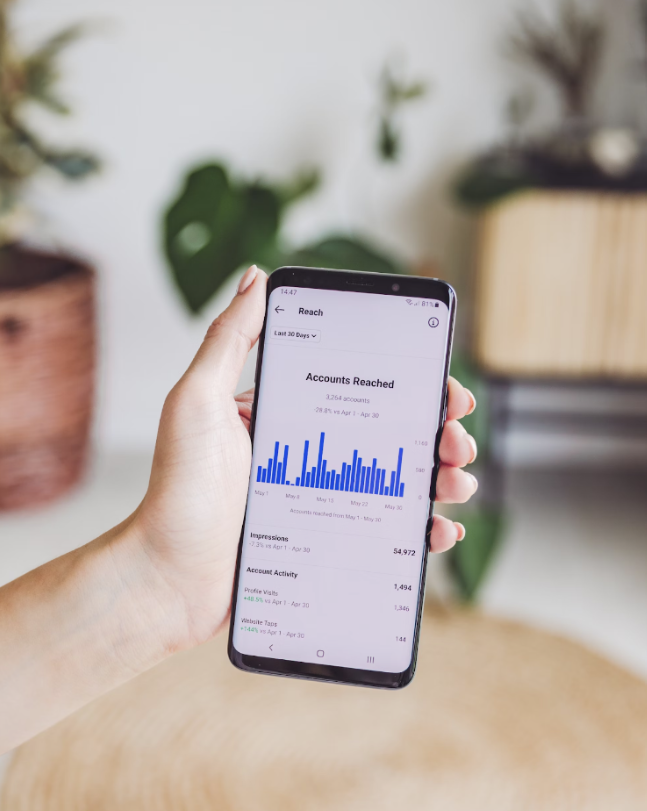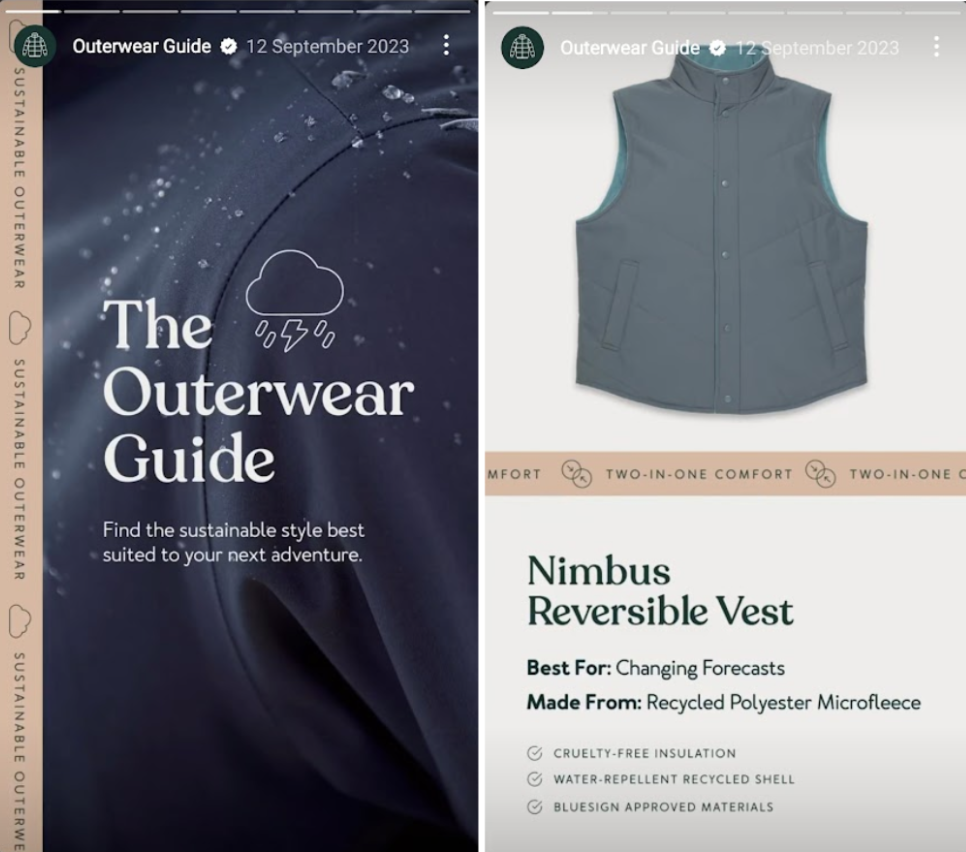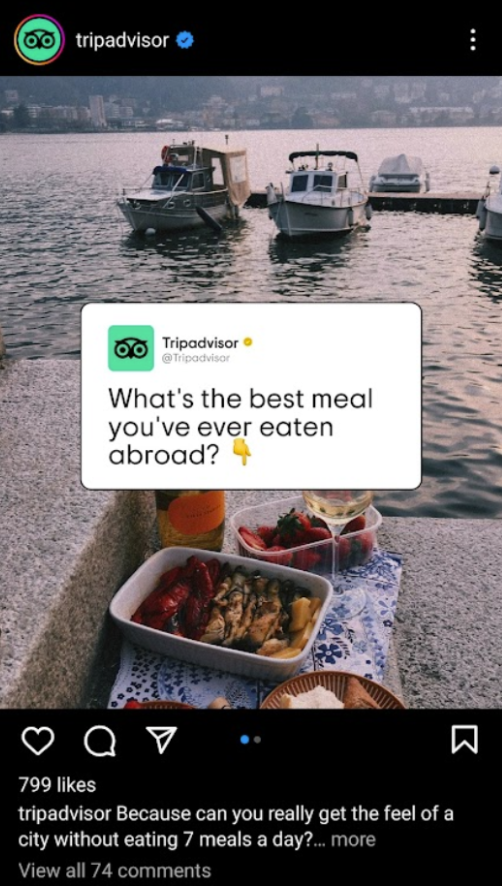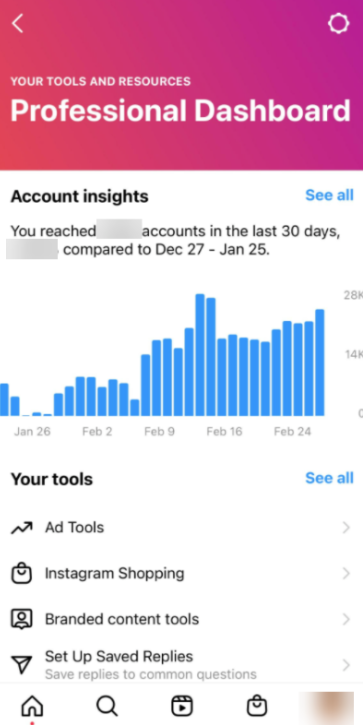Gone are the days of passive engagement. Today’s online shoppers crave a more interactive experience. They want to be entertained, informed, and most importantly, feel a connection with the brands they choose to support. They yearn for authenticity and transparency, seeking brands that align with their values and understand their needs. A good social media content strategy in 2024 should consider this.
Simply broadcasting generic product features and promotional offers is no longer enough. Customers crave a reason to believe – a compelling brand story that resonates with them on an emotional level. They want to feel like they’re part of a community, not just another target in a sales funnel. They actively seek out brands that offer value beyond the product itself, whether that’s informative content, engaging experiences, or a commitment to social responsibility.
You can be one of these brands as well. Did you know that a staggering 87% of online shoppers now turn to social media platforms to discover new products and brands? That’s a goldmine of potential customers waiting to be tapped into. Here are some more interesting statistics about e-commerce you should know about if you want to boost your online sales:
- Social commerce sales are projected to reach a staggering $6.5 trillion globally by 2029, highlighting the immense potential of social media for driving e-commerce sales.
- A recent study revealed that social media referrals convert to sales at a 3x higher rate compared to other channels. This emphasizes the effectiveness of social media in not just attracting customers but converting them into paying ones.
- User-generated content (UGC) on social media can increase conversion rates by up to 10%. This statistic showcases the power of social proof and authentic customer experiences in driving sales.

But how do you break free from the monotonous sea of product photos and generic captions?
The answer lies in crafting a social media content strategy that transforms you from a faceless brand into a captivating storyteller. We’re talking about creating content that resonates, ignites conversations, and positions you as a trusted authority in your niche. In this guide, we’ll be your social media sherpa, leading you through the steps to create a strategy that not only generates engagement but propels your e-commerce sales to new heights.
Choosing the right social media platform
Selecting the most effective social media platform hinges on understanding your business type and target audience. Here’s a breakdown of some popular platforms and how they can benefit various business models:
Social Media Content Strategy For B2C (Business-to-Consumer) Businesses:
Instagram: A visual powerhouse, Instagram thrives on captivating photos and short videos. It’s ideal for businesses that deal in aesthetics, like fashion, apparel, home decor, or food. Leverage high-quality product shots, user-generated content (UGC) featuring customers enjoying your products, and behind-the-scenes glimpses to build brand identity and showcase product appeal.

Facebook: This social media giant boasts a diverse user base, making it a great platform for B2C businesses of all stripes. Utilize Facebook to share a mix of content formats – product announcements, blog posts, educational videos, and engaging polls – to cater to various interests and drive traffic to your website. Utilize Facebook Groups to foster a community around your brand and encourage customer interaction.

TikTok: If your target audience skews younger, TikTok’s short-form video format presents a dynamic opportunity. Create fun, engaging content that showcases your products in action, leverages trending challenges or dances, or offers comedic takes on industry-related topics. This platform excels at grabbing attention and driving brand awareness, particularly among Gen Z and younger millennials.

Pinterest: A haven for visual inspiration, Pinterest caters to users seeking ideas, tutorials, and product recommendations. It’s perfect for businesses in the DIY (Do-It-Yourself) space, home improvement, fashion, travel, or crafting. Create visually compelling boards showcasing your products in use, partner with influencers to curate content, and utilize targeted advertising to reach users actively searching for products in your niche.
Social Media Content Strategy For B2B (Business-to-Business) Businesses:
LinkedIn: The professional networking platform par excellence, LinkedIn is a goldmine for B2B businesses. Utilize LinkedIn to share industry news, thought leadership articles penned by your team members, case studies highlighting successful client collaborations, and updates on company milestones. Leverage LinkedIn Groups to engage with potential partners and industry influencers.
Twitter: For fast-paced communication and real-time updates, Twitter reigns supreme. B2B businesses can leverage the platform for live-tweeting industry events, sharing bite-sized insights and industry news, and engaging in conversations with potential clients. Use relevant hashtags to increase visibility and attract leads actively searching for solutions in your space.
Beyond B2B and B2C:
YouTube: A versatile platform that caters to a wide range of content formats, YouTube is a valuable tool for businesses of all types. Create informative explainer videos, product tutorials, customer testimonials, or behind-the-scenes glimpses into your company culture. The platform’s powerful search functionality ensures your content reaches users actively seeking information related to your industry.
Diversifying Your Social Media Content Strategy
To truly capture your audience’s attention and drive sales, you need to diversify your social media content strategy and leverage formats that resonate with your target demographic. Here are some powerful content formats to consider for your e-commerce brand:
Product Demonstrations
Showcase your products in action! Create short, engaging videos that demonstrate how your products work, their key features, and the benefits they offer to customers. This is a fantastic way to educate potential buyers and highlight the value proposition of your offerings.

Lifestyle Shots
Aspirational imagery is a powerful tool on social media. Use high-quality photos that depict your products seamlessly integrated into real-life scenarios. This could involve showcasing clothing in a trendy street style shoot, home decor items creating a cozy living space, or beauty products used to achieve a flawless look.

User-Generated Content (UGC)
Don’t underestimate the power of authenticity! This should be an integral part of your social media content strategy. Encourage your customers to share their experiences with your products by running contests, offering incentives for UGC, and reposting user-generated photos and videos on your social media platforms. UGC builds trust and social proof, showcasing your products in real-world settings through the lens of satisfied customers.

A prime example of effective use of UGC TJ Maxx’s #Maxx50Challenge. TJ Maxx called upon followers to curate a fashionable Spring ensemble for under $50 using TJ Maxx products. Participants eagerly embraced the challenge, flooding Instagram with their stylish creations, all tagged with the branded hashtag. TJ Maxx took the initiative further by showcasing the best looks on their own Instagram stories, sparking a viral sensation.
Behind-the-Scenes Glimpses
Take your audience on a journey! Offer exclusive peeks into your company culture, the production process, or your team at work. This fosters a sense of connection and transparency, allowing customers to feel like they’re part of the brand story.

Sprout Social often has Instagram Stories of employees guiding office tours and introducing other employees.
Educational Tutorials
Provide valuable information to your audience! Create tutorials that teach viewers how to use your products effectively, offer tips related to your industry, or solve common customer pain points. Educational content establishes you as a thought leader in your niche and positions your brand as a trusted resource.

This guide about TenTree is about outerwear for varying levels of cold temperatures.
Interactive Polls and Quizzes
Boost engagement and gather valuable insights! Utilize interactive features offered by social media platforms to create polls, quizzes, and contests that allow your audience to participate directly. This not only makes your content more engaging but also provides valuable customer data about their preferences and interests.

TripAdvisor often has polls and quizzes asking its followers about their memorable trips and experiences, and these posts generate far greater engagement than other general posts!
Remember, the key is to experiment and find the content formats that resonate best with your audience. By offering a diverse mix of informative, entertaining, and interactive content, you’ll keep your audience engaged, build brand loyalty, and ultimately drive sales for your e-commerce business.
Measuring Your Success: The Importance of Analytics on Social Media Platforms
So you’ve implemented a stellar social media content strategy, crafted captivating content, and actively engaged with your audience. But how do you know if your efforts are translating into real results for your e-commerce business? Here’s where social media analytics become your best friend. By tracking key metrics and understanding what they tell you, you can refine your strategy and optimize your social media presence for maximum impact.
Here’s a breakdown of some prominent social media platforms and the key metrics you should be tracking on each:
Across all platforms: Track both reach and engagement to understand the effectiveness of your content in capturing attention and sparking interactions. These two metrics often get confused, but they paint a very different picture. Reach refers to the total number of unique users who saw your content, while engagement measures how those users interacted with your content. Here are some specific engagement metrics to consider:
- Likes, comments, and shares: These basic metrics indicate how well your content resonates with your audience.
- Click-through rates (CTR): This metric measures the percentage of users who clicked on a link in your post, indicating their interest in learning more about your product or offer.
- Saves and bookmarks: These actions signify that users find your content valuable enough to revisit later, potentially leading to future purchases.
Platform-Specific Insights:
- Facebook: Utilize Facebook’s insights to track post reach, engagement by content type, website traffic generated from Facebook clicks, and conversion rates for ad campaigns. You can also use Facebook Audience Insights to get acquainted with your follower base and tailor messages accordingly.

- Instagram: Leverage Instagram’s insights to monitor profile views, reach for individual posts, engagement metrics like likes, comments, and saves, and website clicks driven by your Instagram bio link. Additionally, track story views, completion rates, and swipe-up engagement for a deeper understanding of your story content’s effectiveness.

- Twitter: Analyze tweet impressions, engagement rates (including likes, retweets, and mentions), click-through rates, and website traffic driven by your Twitter clicks.
- TikTok: Pay attention to video views, completion rates, likes, shares, comments, and follower growth. These metrics indicate how well your TikToks capture attention, spark conversation, and attract new followers.
Remember:
- Benchmarking: Compare your social media metrics against industry benchmarks to understand how you stack up against your competitors.
- Track Over Time: Monitoring changes in key metrics over time allows you to identify trends and assess the effectiveness of any adjustments you’ve made to your social media strategy.
- Goals Matter: Align your social media analytics with your overall marketing goals. Are you aiming to increase brand awareness, drive website traffic, or generate leads? Track the metrics that directly correlate with your objectives.
By consistently monitoring and analyzing your social media data, you gain valuable insights into your audience’s behaviour and preferences. This empowers you to tailor your content, optimize your posting schedule, and ultimately turn those fleeting “likes” into loyal customers and thriving sales for your e-commerce business.
Pro tip!
I think we’ve already established that a good social media content strategy is a great way to drive traffic to your website. However, your checkout page and payment gateway can make or break your final sale.
For a simple, secure payment gateway, check out PaySprint. We have a no-frills, subscription-based model that allows you to receive payments for online (and in-store!) payments. With identity verification, multi-level authentication, and top-notch encryption, your online payments and receipts are locked down tighter than a vault.
For more informative content on small businesses and e-commerce, click here! If you’re running an e-commerce store, we highly recommend you read these:
Why Every Small Business Needs a Growth Plan
Top 7 Decision-Making Tips for Managers
Scaling Your Business with PaySprint Wallet Balance Protection
